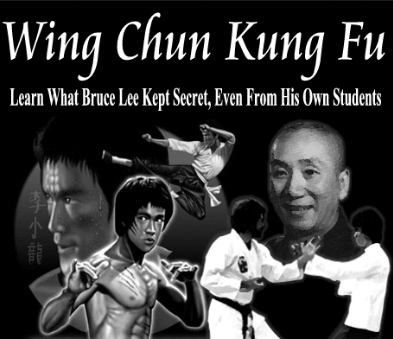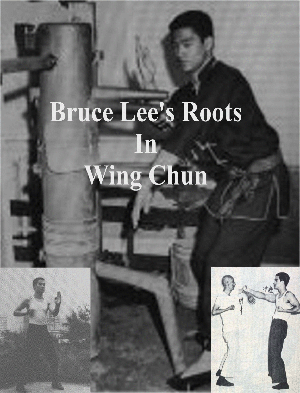Bruce Lee - Master of Bait and Switch
By Sifu Tony Massengill
Normally when the terms “Bait and Switch, and New and Used” are mentioned, we think of car lots, not Martial Arts. But these terms not only apply to Martial Arts, they can be appropriately used in reference to the man who is perhaps the greatest Martial Artist of our time, Bruce Lee. Of course we will need to change the spelling of the word new, to knew, because we will be discussing what Bruce actually “knew and used”, compared to what he “knew and taught”. This is where the terms Bait and Switch will come into play.
Bruce Lee arrived in the United States at the age of eighteen. He had no real job skills and very little money. Aside from his training in Kung Fu, he had very little he could do. So consequently he began teaching Kung Fu. Bruce’s only formal training had been in Wing Chun Kung Fu. There has been a lot written over the years about the numerous systems from which Bruce created Jeet Kuen Do, many of these claims from J.K.D. instructors who have added to what Bruce had taught, and are attempting to sell what they are teaching as what Bruce taught. It has been acknowledged by Linda Lee, Bruce’s widow, that Bruce’s only teacher was Wing Chun Grandmaster Ip Man.

Bruce Lee was a very intelligent Martial Artist, and an excellent Martial Art researcher, but the foundation on which Bruce built his personal expression of the fighting arts was Wing Chun. It is physically impossible for a building to be any stronger than its foundation. Bruce realized this, and used Wing Chun as the Foundation on which his life's work would be built.


J.K.D. it has been said, is hard to define. In fact it has been so hard to define, that factions have formed within the ranks of those claiming to represent Bruce Lees “creation”. Even with all of the confusion , among those recognized as experts in J.K.D., one thing can not be disputed. That fact is that Wing Chun was the foundation upon which Bruce Lee learned to view the world of fighting methods. His training in Wing Chun influenced every phase of his development as a fighter. Ask yourself these questions. What made Bruce Lee stand out as different from all of the other Martial Artist in the 1960’s? What brought people like Kenpo Black Belt, Dan Inosanto, and Heavy Weight Karate Champion Joe Lewis to his doorstep? Was it that he was teaching techniques such as Jab, Cross, Hook, and Uppercut, or was it his unique kicking methods such as roundhouse, side, hook, and back kick? The answer is NO. Everybody had those weapons at their disposal. The thing that set Bruce Lee apart from every other Martial Artist in the U.S. at that time was Wing Chun. No one else in the U.S. had knowledge of the Wing Chun system. What made Bruce Lee different was things like Chi Sau (Sticky Hands), the Wing Chun principle of simultaneous defense and attack, The Wing Chun principle of Jeet (Intercepting) techniques. These were the things that made people who were already experts in other fighting methods seek Bruce Lee out.
When Bruce Lee first began teaching, he was teaching what he knew of Wing Chun. Because he hadn’t completed his Wing Chun training before leaving Hong Kong, and because his teacher Ip (Yip) Man refused to allow the teaching of Wing Chun outside of the Chinese people, as was tradition, Bruce called what he taught Jun Fan Gung Fu. Lee Jun Fan was Bruce’s Chinese name. At that time Bruce taught a rather pure form of Wing Chun. In later years his teaching moved away from the Wing Chun and into a direction that more resembled a Kick-Boxing style. There has been much speculation as to why he made these changes. There are two events, which clearly indicate Bruce’s reason for removing Wing Chun from what he taught his students. The first was recorded by James DeMile, who was an early student of Bruce’s. His recollection of that event was this:
This is an excerpt from a letter from James W. DeMile to the editor and staff of Inside Kung Fu, and Hawkins Cheung. The latter who had a series of articles published on Bruce and JKD, to which resulted in the following reply.
“What Sifu Cheung did not feel when he touched hands with Bruce's second- and third-generation students is some key elements that Bruce left out in his later teaching. Bruce made a statement to me that made everything clear as to why he changed certain aspects of his teaching. Jessie Glover, Bruce's first student and probably the best fighter in our group, and I were visiting Bruce when he was teaching a Jun Fan class in a Chinatown basement (Oakland). We noted that Bruce was teaching some things that seemed incomplete. We asked Bruce about this and he said, “Why should I teach someone to beat me?”
It was true. Why should he spend all his time developing his personal style and then give it away to someone else who might one day challenge him.“
The second event was recorded in an interview with Dan Inosanto that was conducted by Black Belt Magazine.

Bruce Lee with his top student, and personal training partner, Dan Inosanto
From Black Belt Magazine August 1995 p42-44
BB: Were there certain topics you learned from Lee, but couldn't impart to other students?
INOSANTO: There were 13 things I could teach on the classical list, and that was it. He used to say that under no circumstances could I teach double pak sao(slap block). Pak Sao bil jee (slap block/finger jab) and pak sao lop sao (slap block/grabbing hand) were big big secrets. He was the head man, so I kept it exactly the way he wanted me to teach it.
NOTE:The restricted techniques were all PURE Wing Chun.
These two events clearly indicate that Bruce Lee made a conscious decision to discontinue the teaching of Wing Chun to his students, not because, as some have claimed, that the techniques and methods of Wing Chun were inefficient, but because he realized that Wing Chun was the thing that set him apart from everyone else. Indeed, Bruce realized that if all things are equal, such as knowledge, skill, and ability, then size and strength become a major factor. But if there is a significant difference in knowledge and skill, then size and strength can easily be overcome. If Bruce had taught students such as Joe Lewis, recognized by many as the most skillful and powerful Karate fighter of all time, all that he knew, then at 145 lbs, Bruce would have been at his mercy. In China, Bruce Lee was of average size, but in the U.S., most of the Martial Artist that he came into contact with were much bigger, so secrecy became a necessity for survival. Thus began the Bait and Switch.
Bruce Lee commanded everyone’s attention because what he was doing was so much different than the Martial Art systems that were then being taught in America. This brought people to Bruce’s door. Bruce somehow was successful in bringing people in with his personal method of fighting (Wing Chun), and then teaching these people something entirely different.